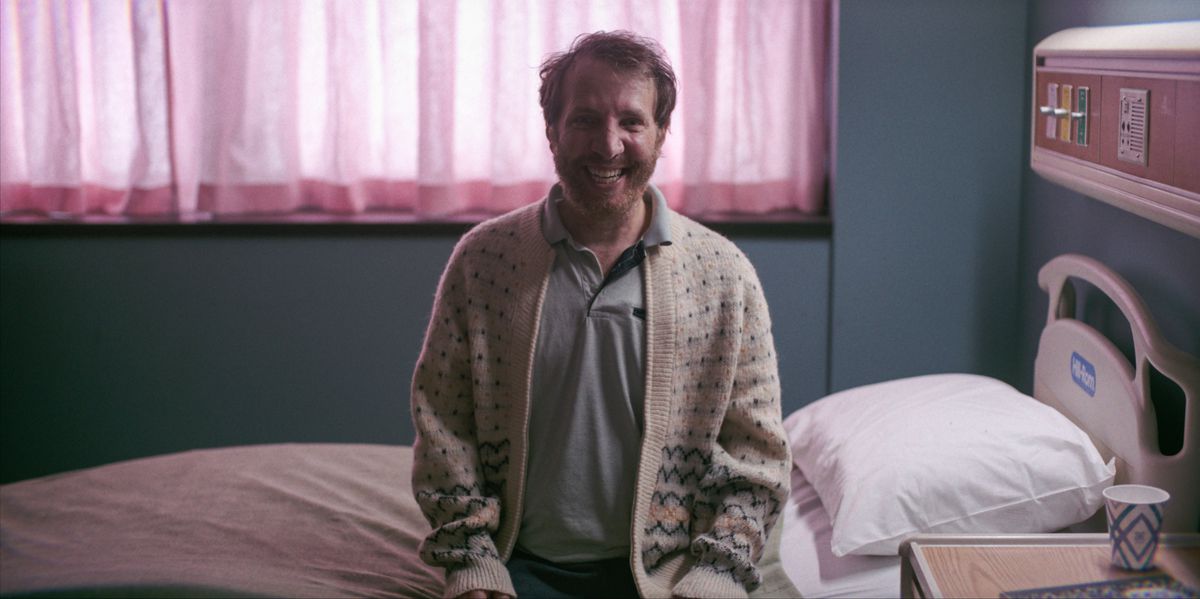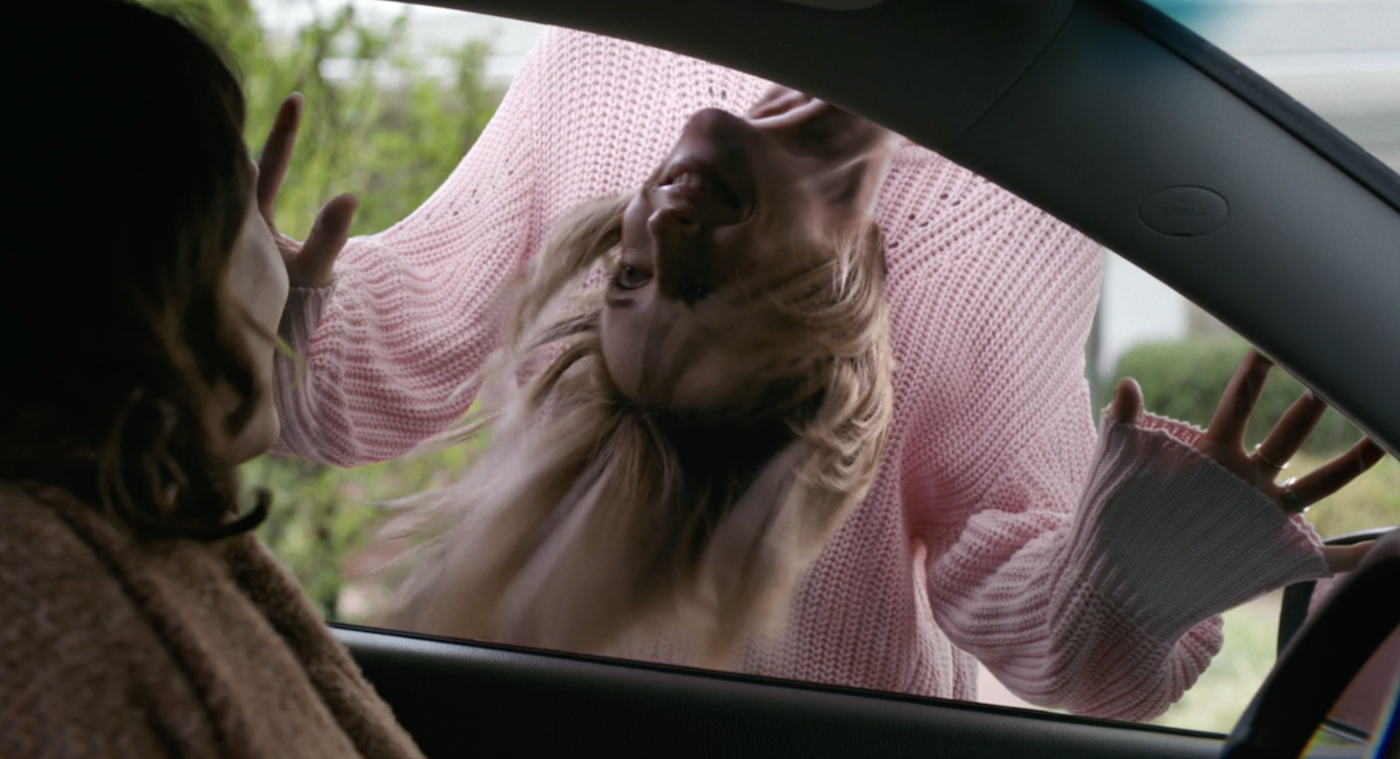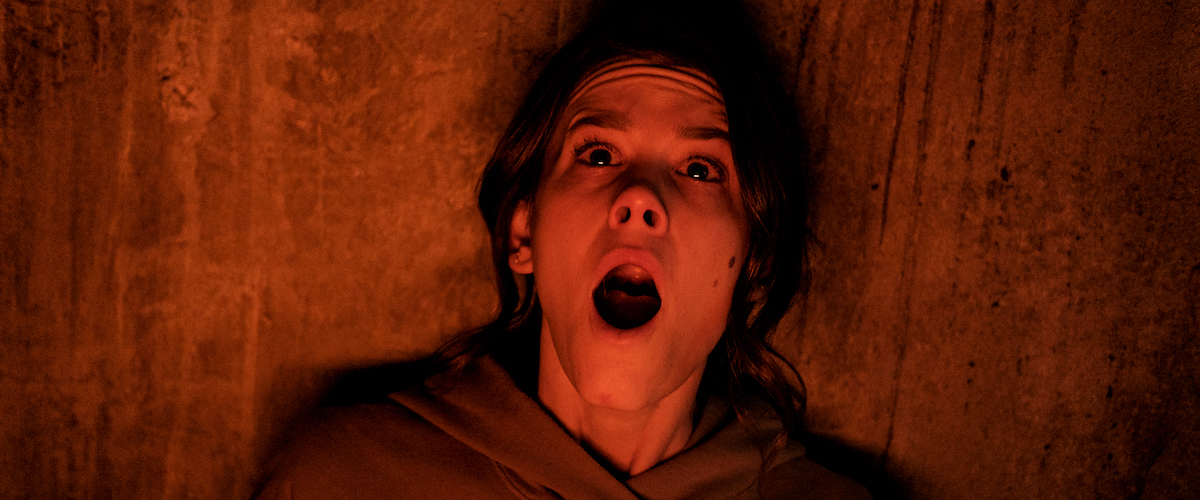Smiles – they can mean a lot of different things. A lot of the time, our smiles aren’t our own – we put them on for social reasons, or defensively. Smile takes that notion of a smile not your own to a very frightening endpoint.
The film opens with a young woman (Caitlin Stasey, in a brief but excellent performance) being brought into a mental hospital where our protagonist, Rose (Sosie Bacon), works as a psychiatrist. The young woman tells Rose that she has been seeing some kind of terrifying, smiling apparition which takes the form of different people she has known in her life. Naturally Rose tries to assure her that these visions can’t harm her – but shortly thereafter the young woman kills herself in front of Rose whilst displaying that awful rictus grin which you can see on the film’s poster.
It’s a great, self-contained opening. It might also seem – and this is what I felt myself at first – that the film would struggle to move beyond this quite simple premise; and unpleasant as those scary smiles are, they surely will lose their effect after the umpteenth reveal. Especially bearing in mind that Smile runs for nearly two hours. Well, I was proven wrong. Smile is a great example of how a horror film can continually ratchet up tension well beyond what its conceit would seem capable of. In fact, if the conceit is upsetting enough, that simplicity of focus is an enormous asset.
Parker Finn‘s film is certainly derivative in respects. The film soon establishes that, by witnessing the young woman’s suicide, Rose has attracted the attention of some kind of smile-demon – she has roughly a week (or maybe just four days) before she meets the same fate, passing the curse onto whoever happens to witness her own gruesome finale. Just as in The Ring, or It Follows, Rose needs to somehow break the curse, or defeat the entity, before her time runs out. But those films are fantastic models, and derivative or not, it’s all about the execution. And Smile executes ruthlessly.
Above all else, Smile is a masterpiece of rhythm. Each frightening moment is perfectly spaced and located. After all, jump scares can work in two ways. They can work when you don’t know they’re coming – but often they’re scarier when you do know they’re coming. Smile plays it both ways, masterfully. Jump scares have a bit of a bad reputation now, but they’re a venerable technique – the chestburster scene in Alien is just a jump scare, as is the ending of A Nightmare on Elm Street (for my money, one of the scariest scenes in any movie ever). The issue is that an overreliance on jump scares often serves to cover a filmmaker’s total failure to create an adequate mood.
But Smile creates a potent mood of dread from its opening onwards – and the sheer hopelessness of Rose’s situation only becomes more palpable as the film winds on. The cinematography and, particularly, the soundtrack of this film are exceptional. Nor does the film ever become monotonous. If it were only a matter of loud noises and scary faces it would grow old quickly. But Smile always manages to surprise. And the film’s final act takes the horror in some truly nightmarish directions.
There is some deeper symbolic meaning in Smile – the antagonist entity is explicitly linked with the experience of trauma, which is often passed on from person to person, particularly within families. Rose’s own back story is developed towards the end of the movie and serves to place many of her actions and attitudes in context. Sosie Bacon is very good and believable in the role. Kyle Gallner’s Joel, her offsider, is less well-drawn and mostly serves as a vehicle for exposition.
But Smile is trying, above all else, to be as scary as possible, and it never lets anything get in the way of that. It seems obvious on paper – but after watching Smile I was left feeling like a lot of other recent horror movies just don’t have their hearts in it, not like Smile does.
Smile is currently playing in cinemas.


